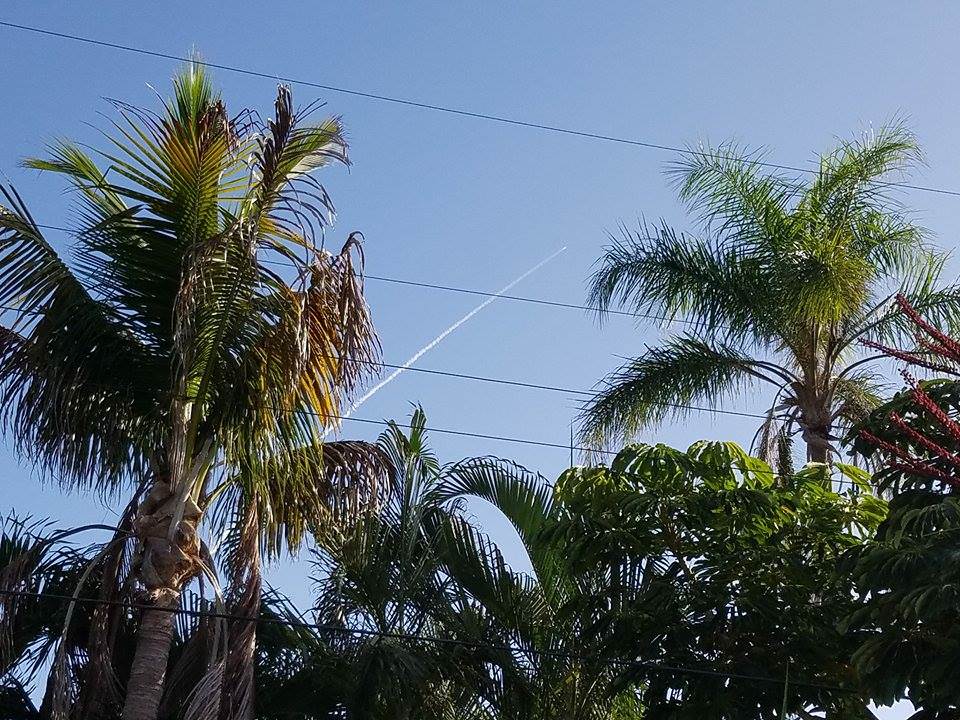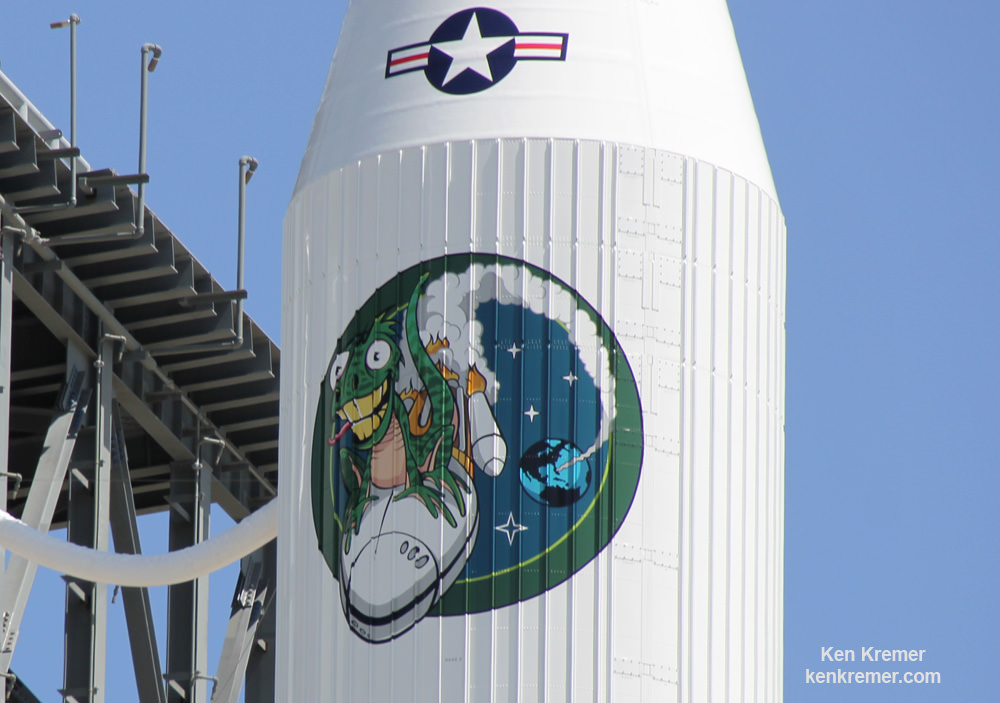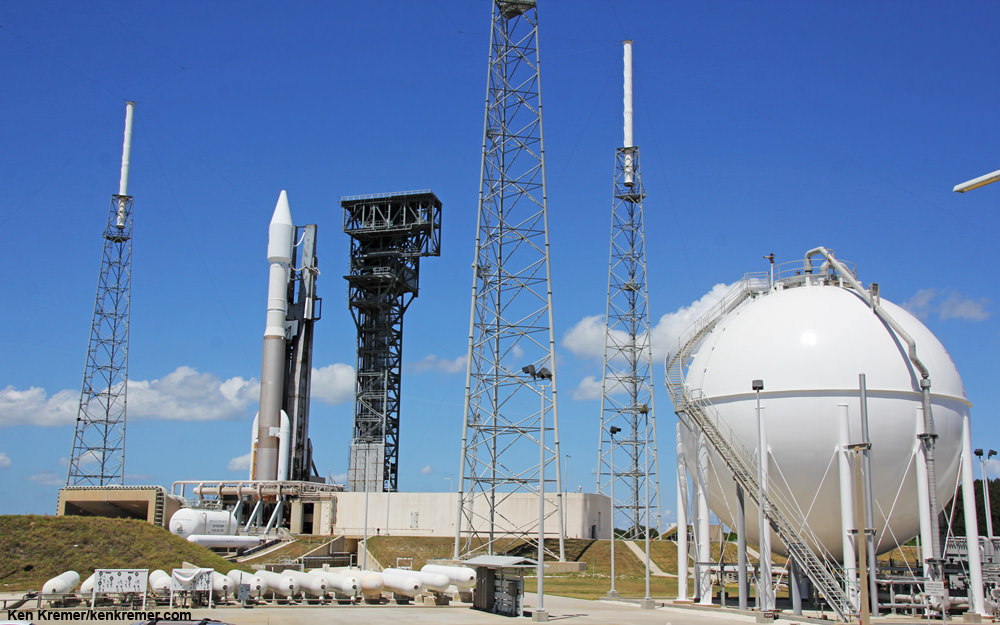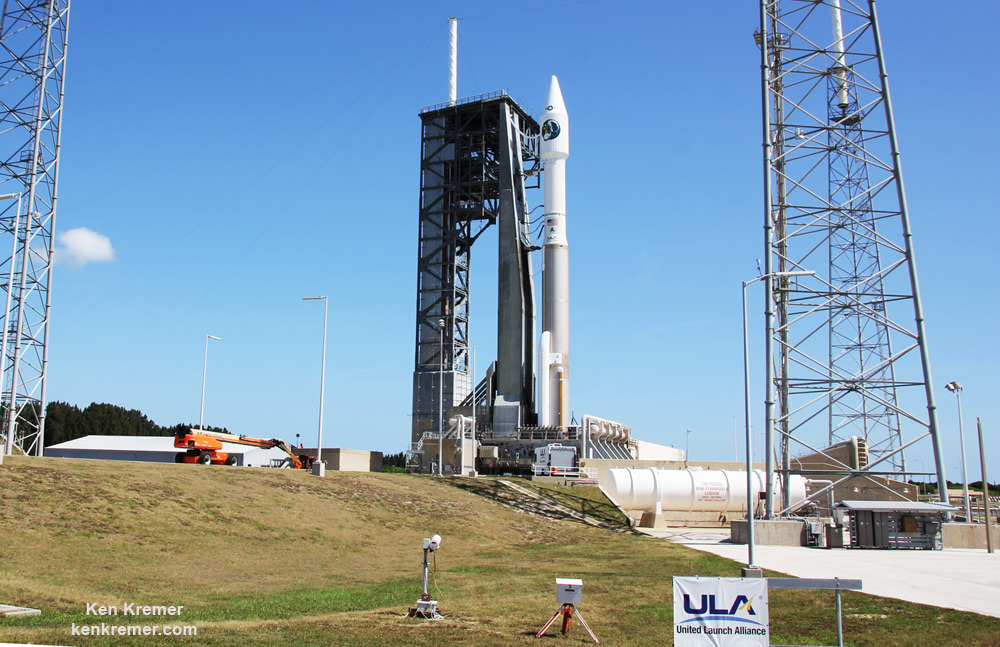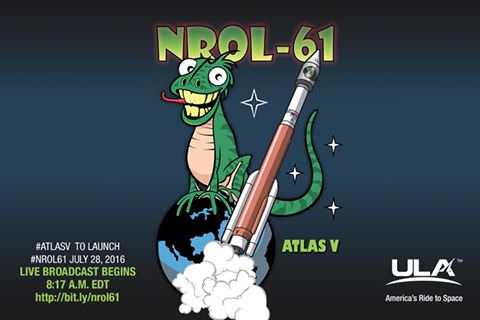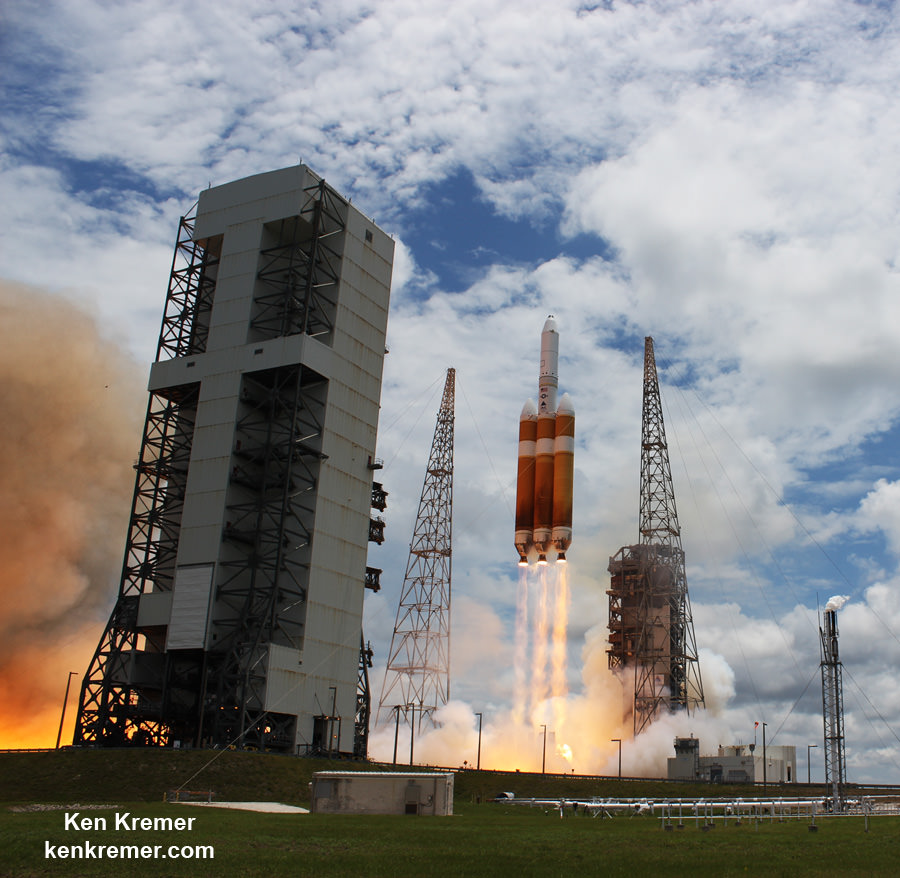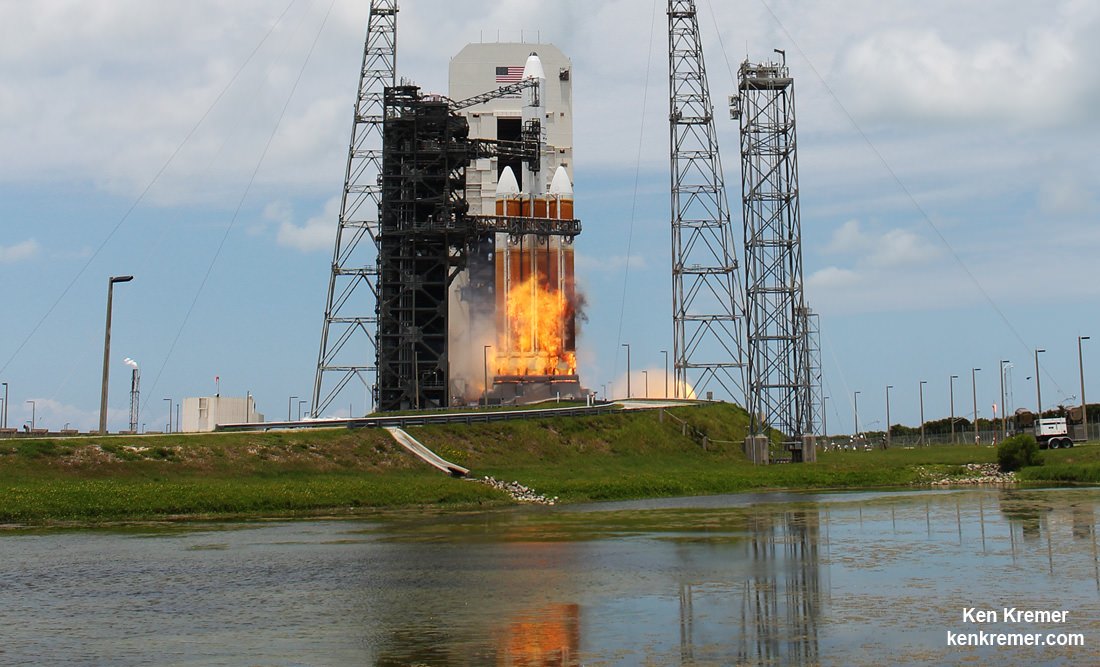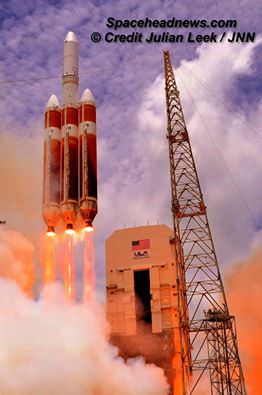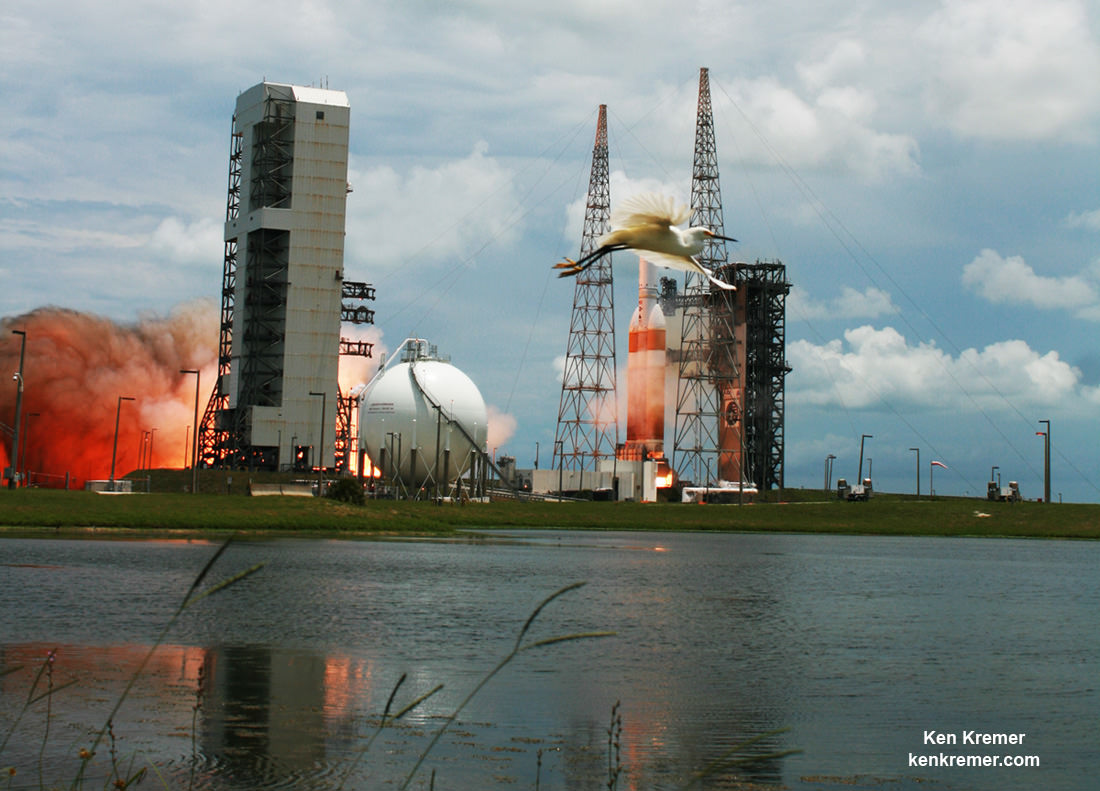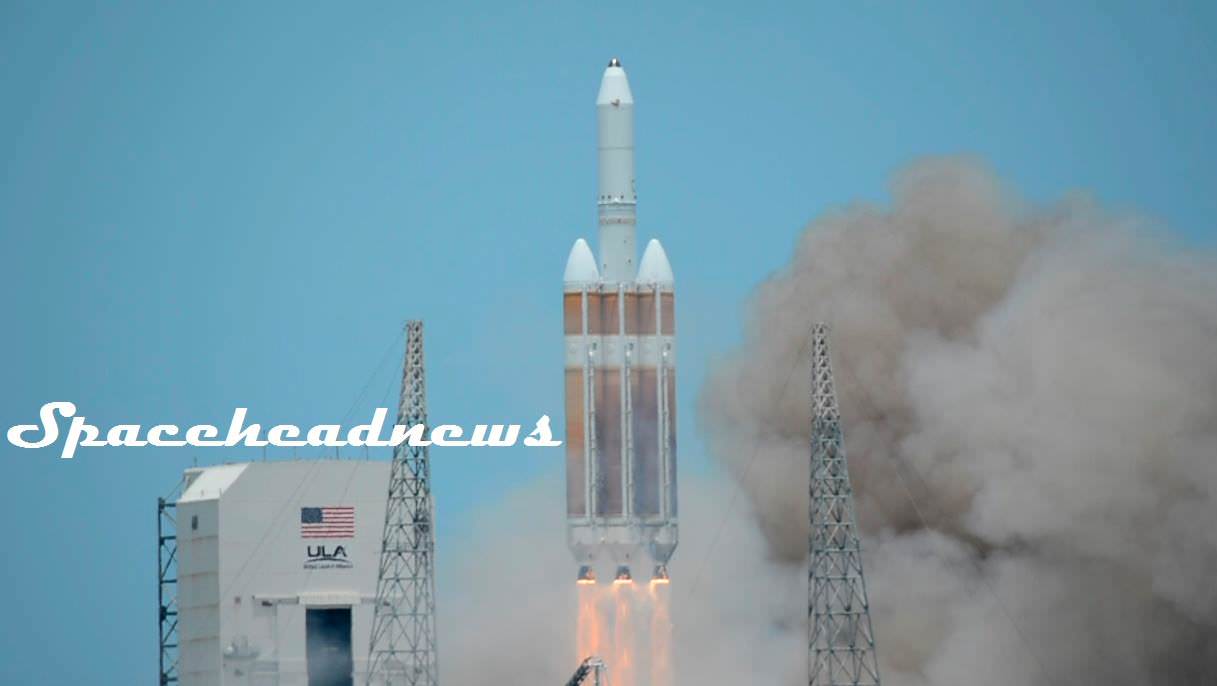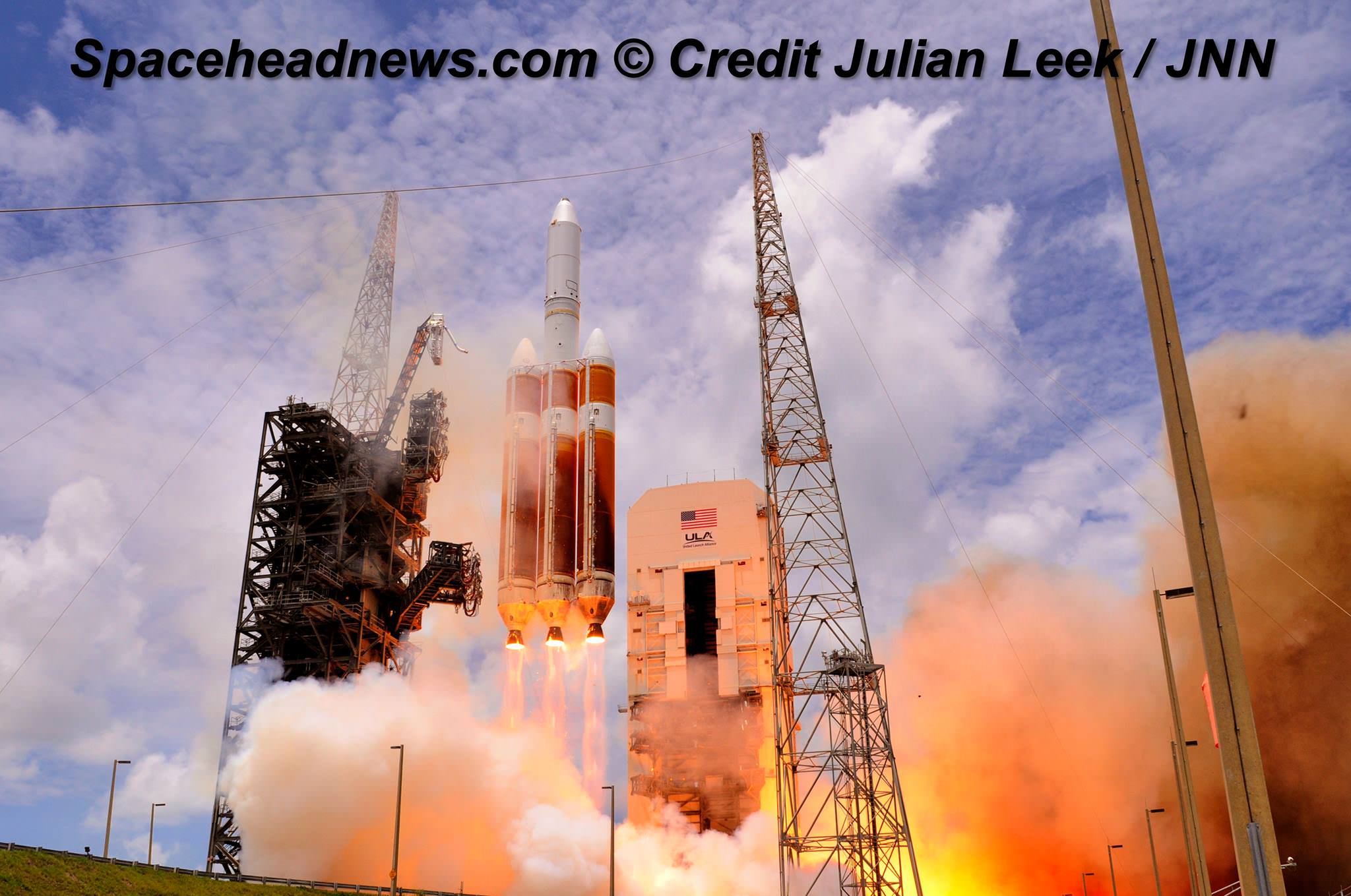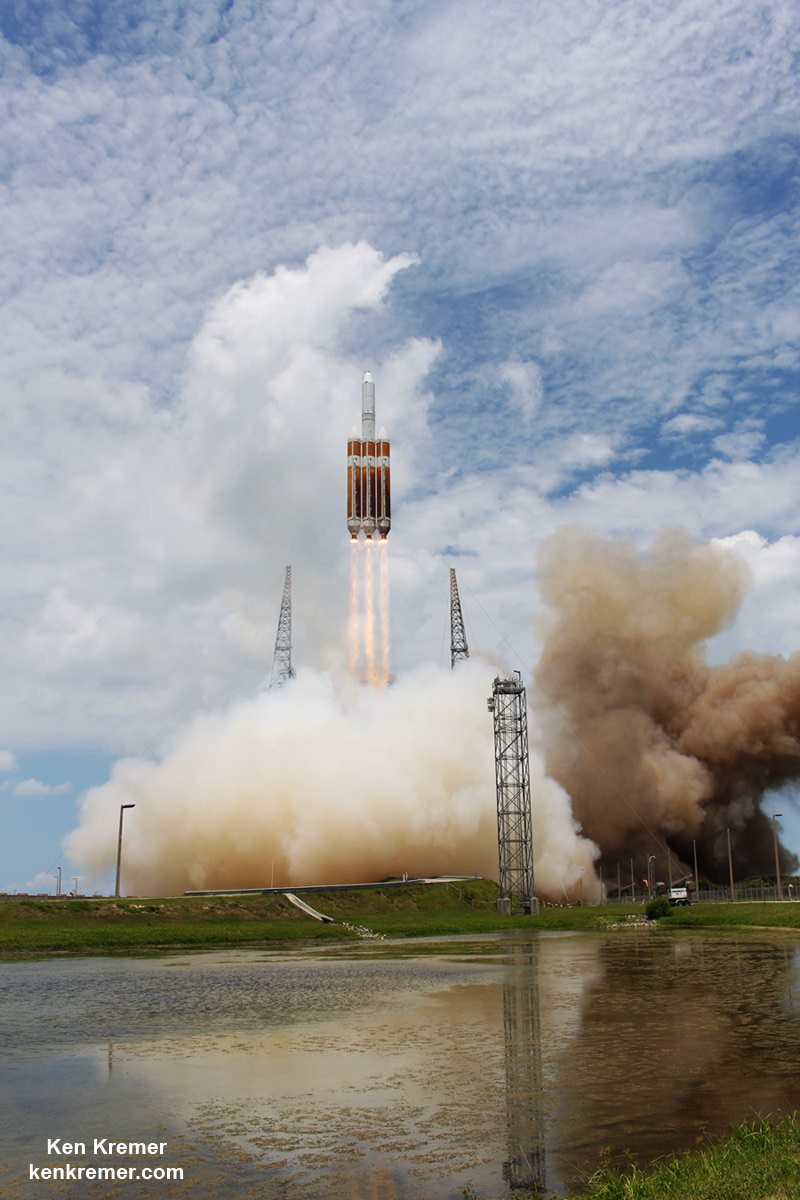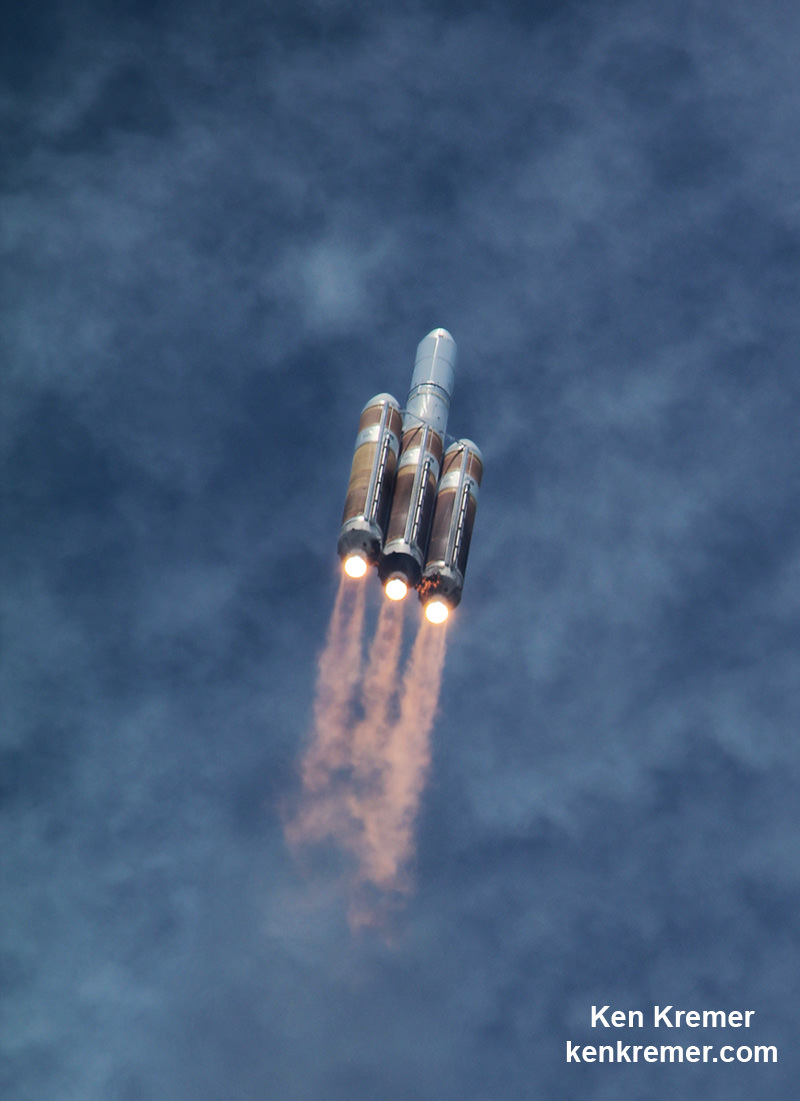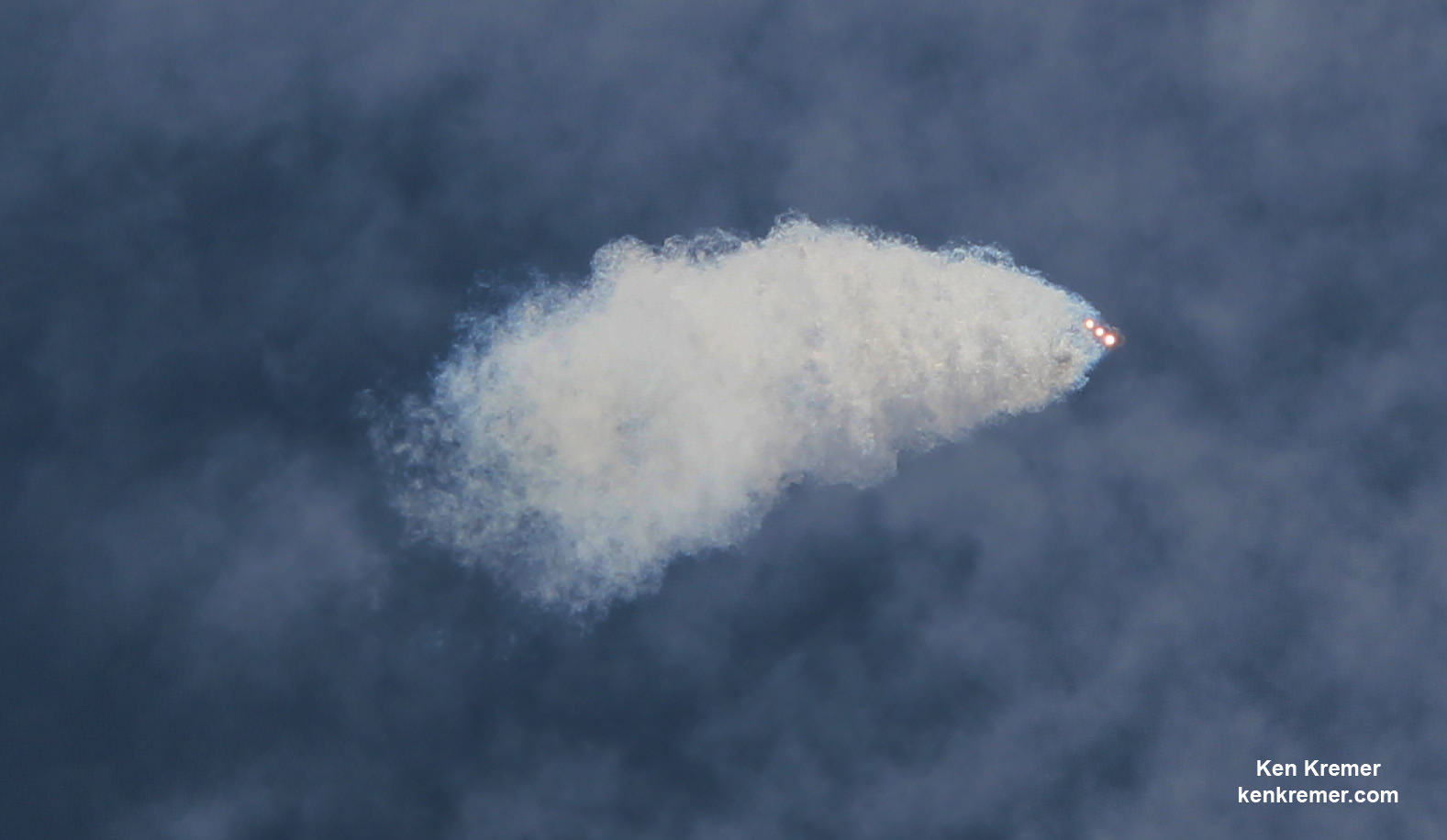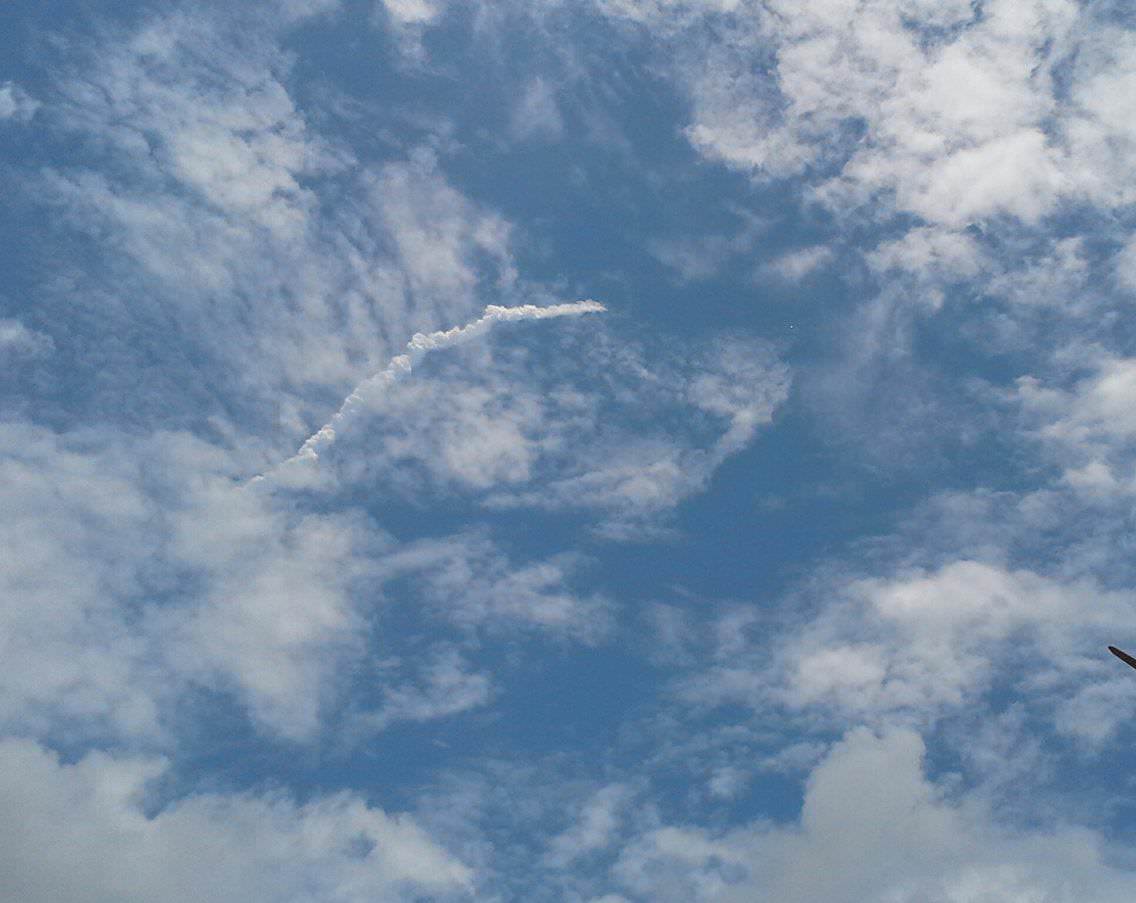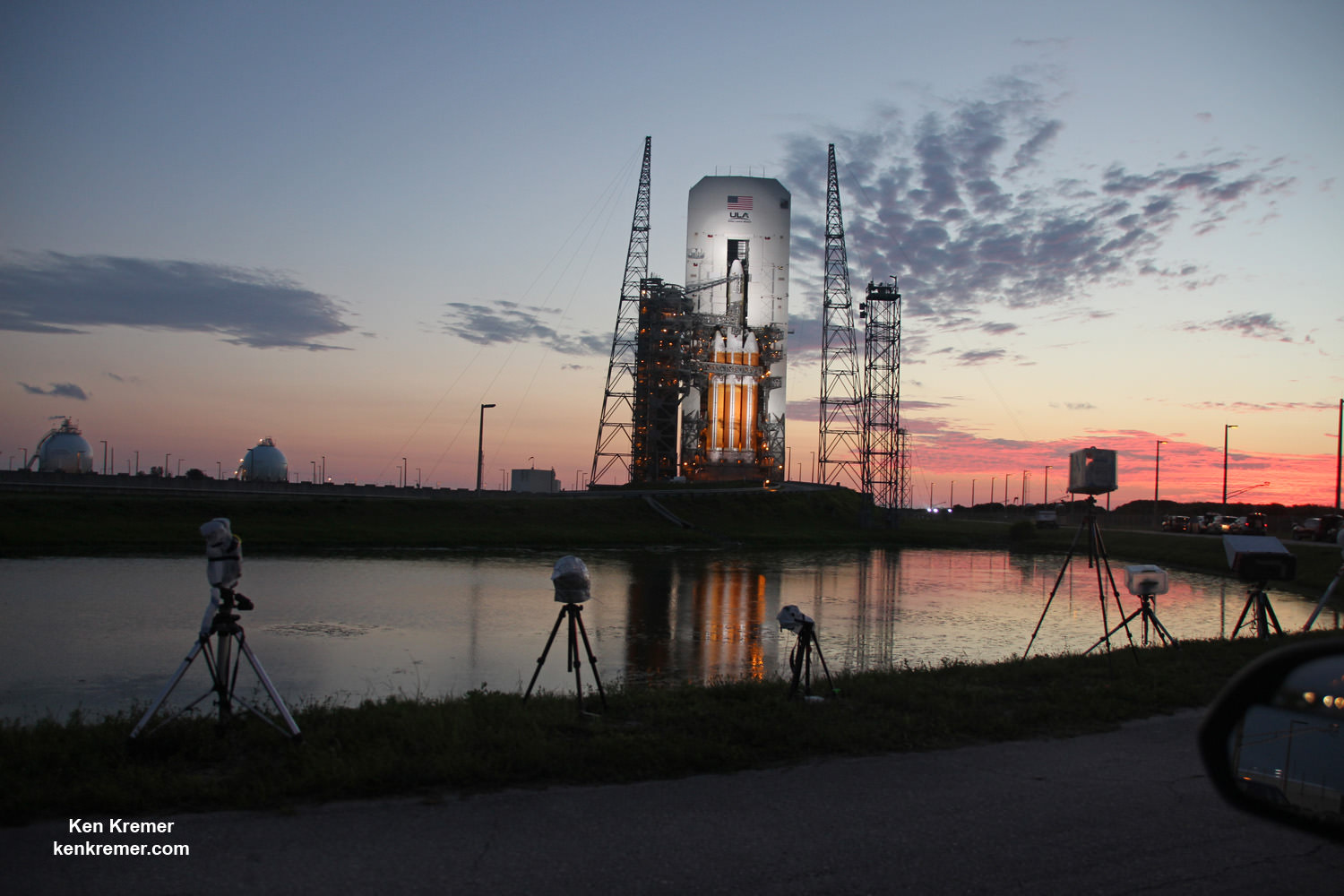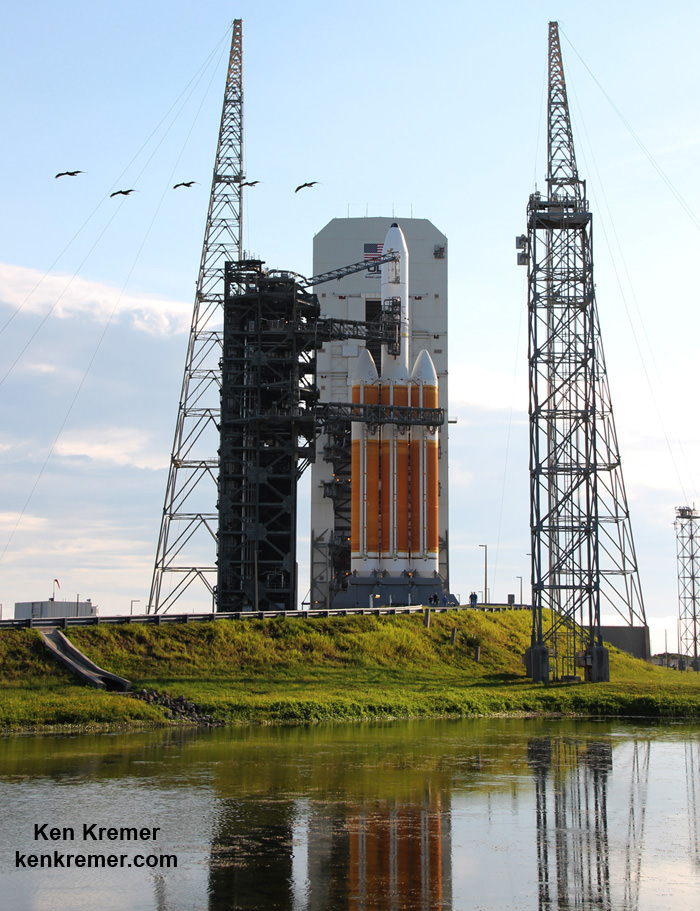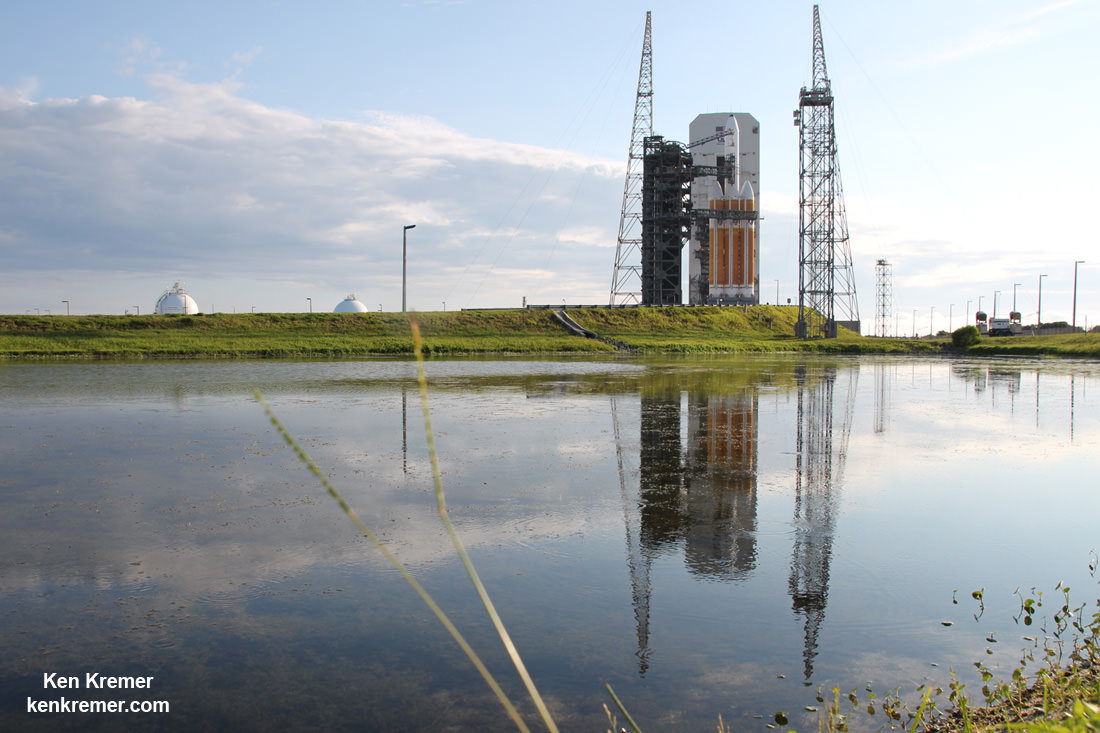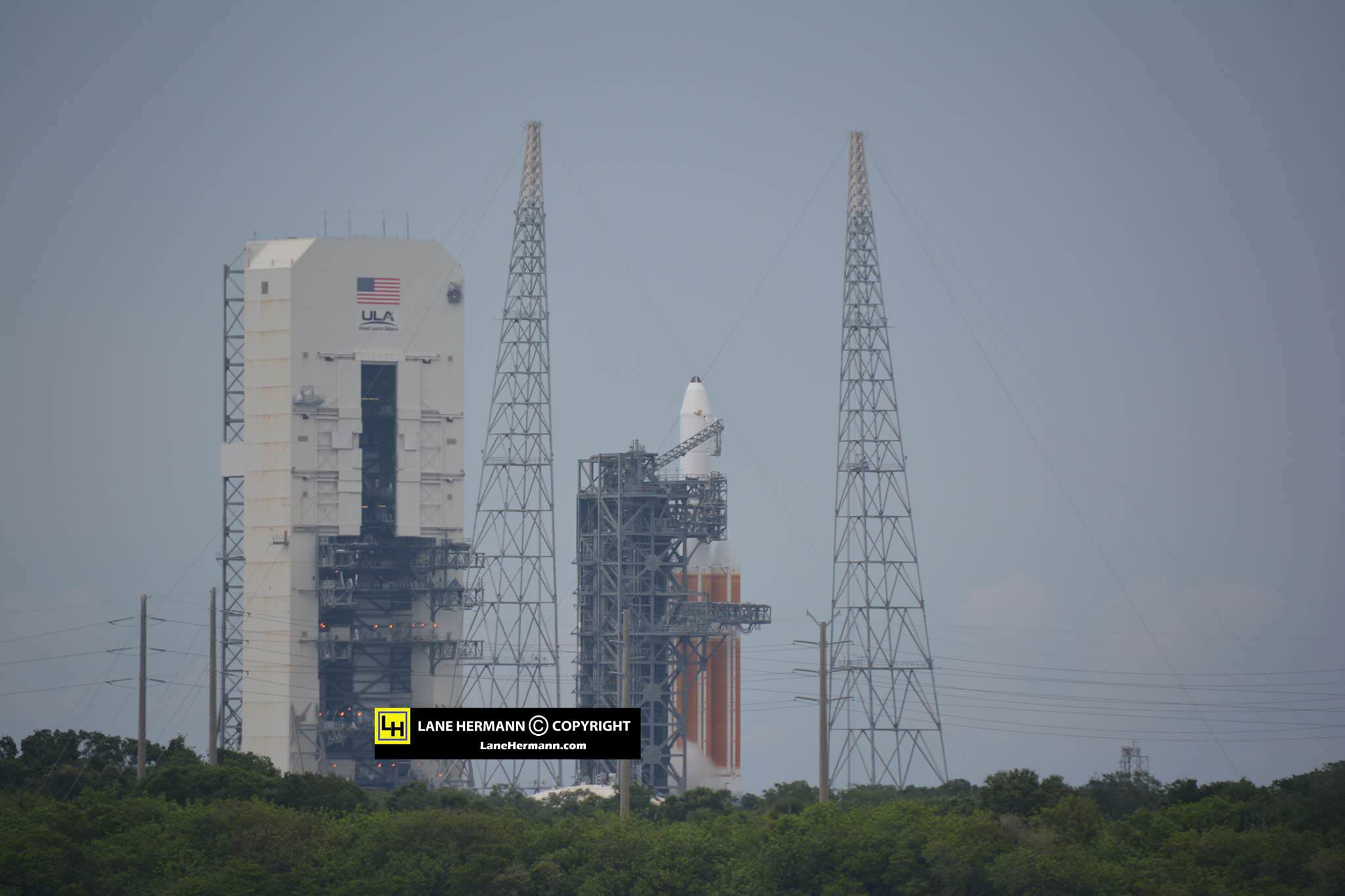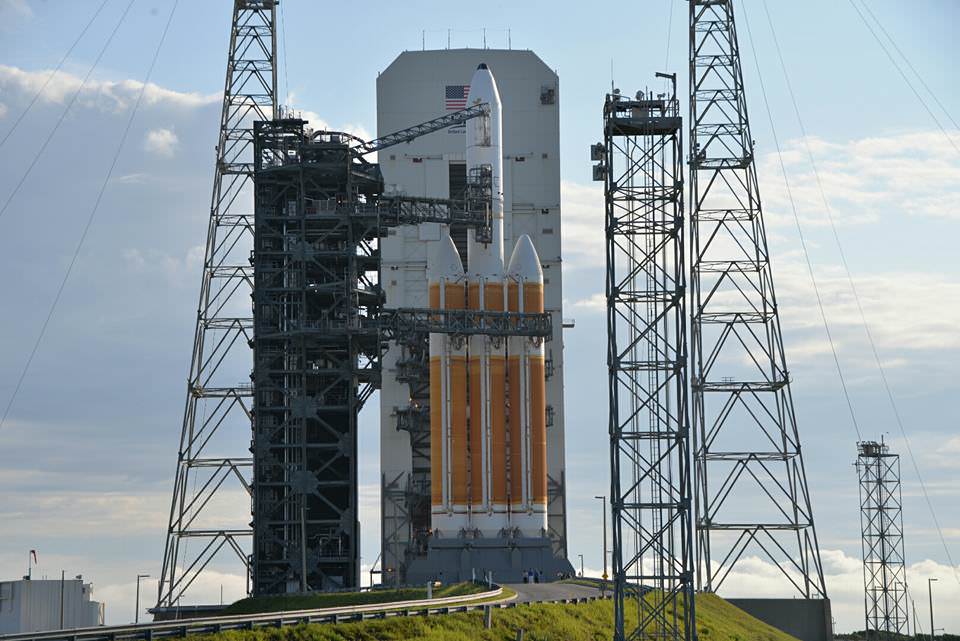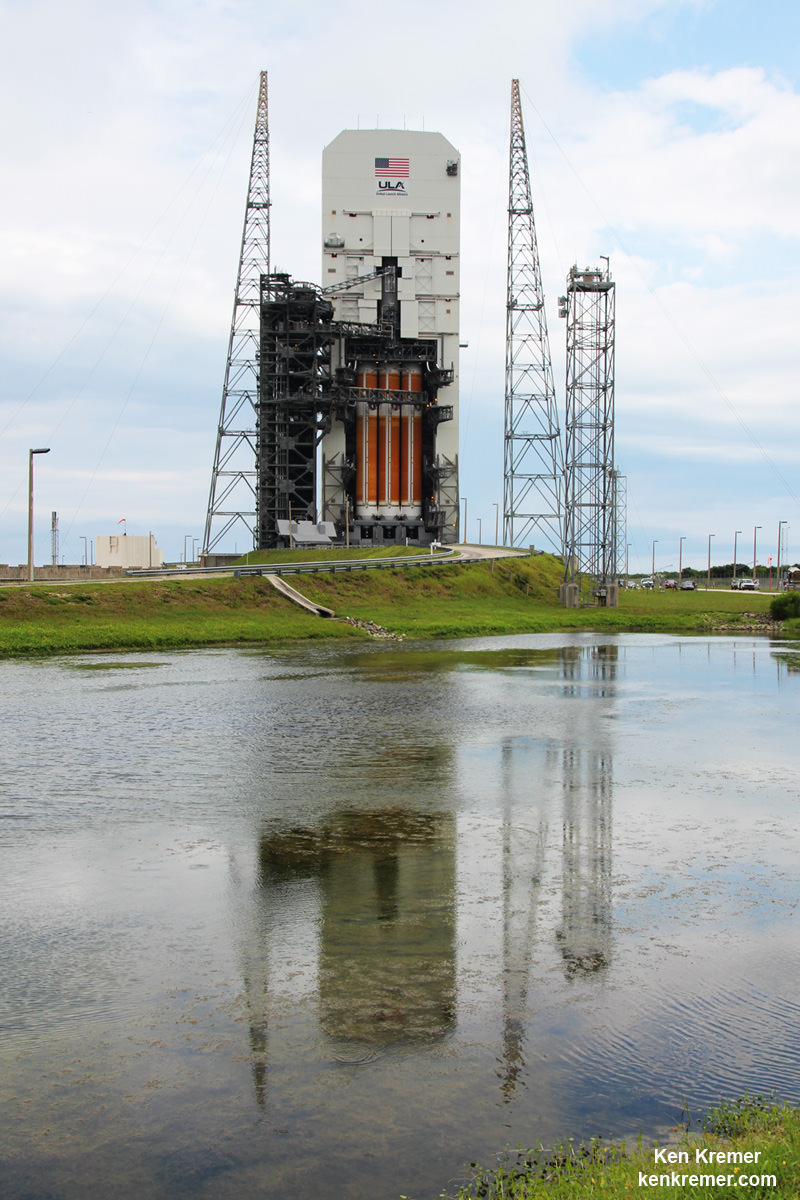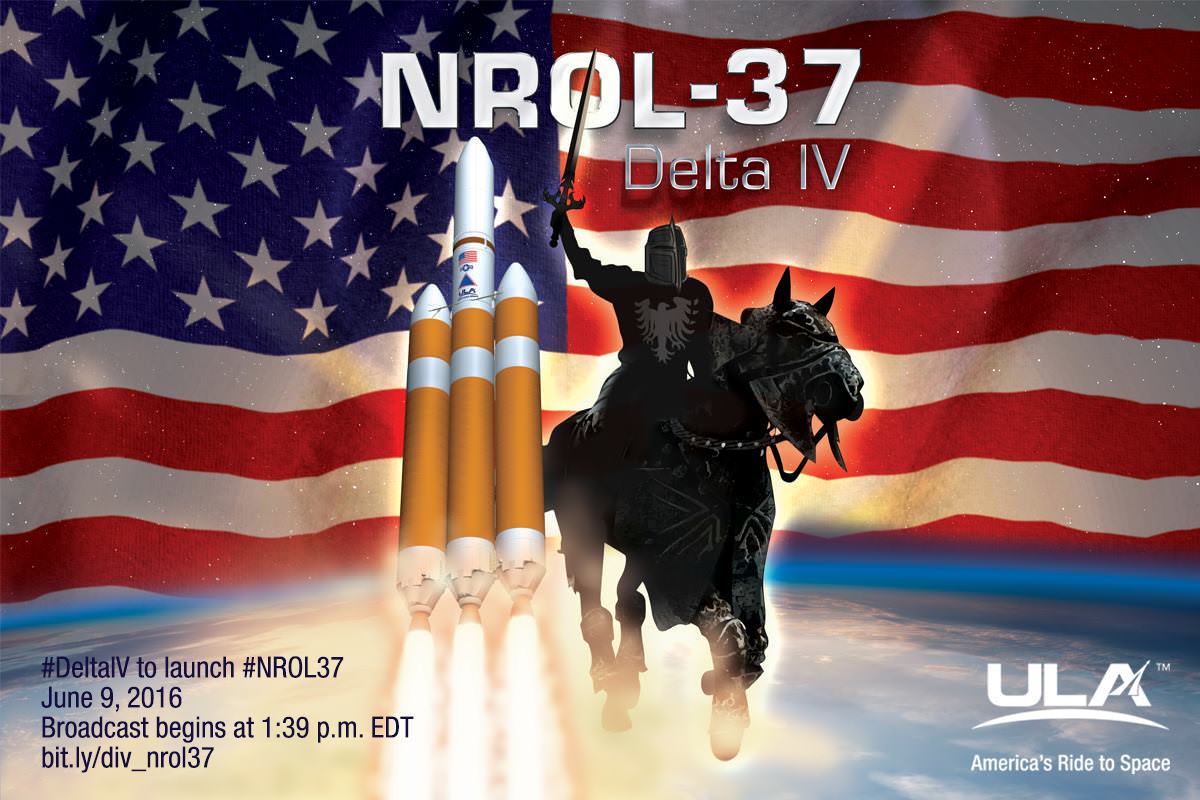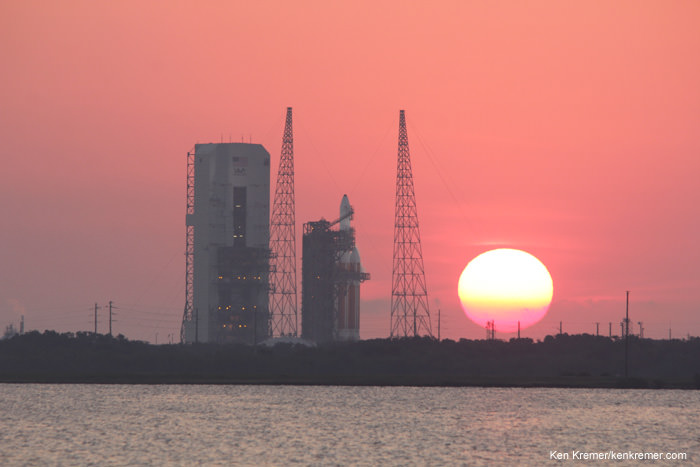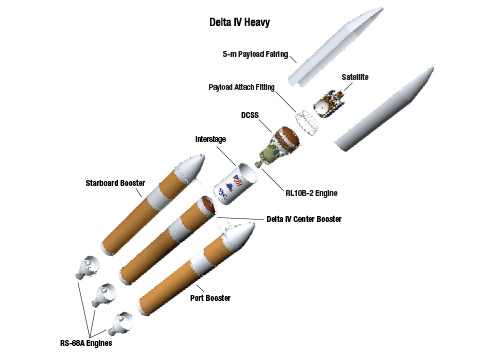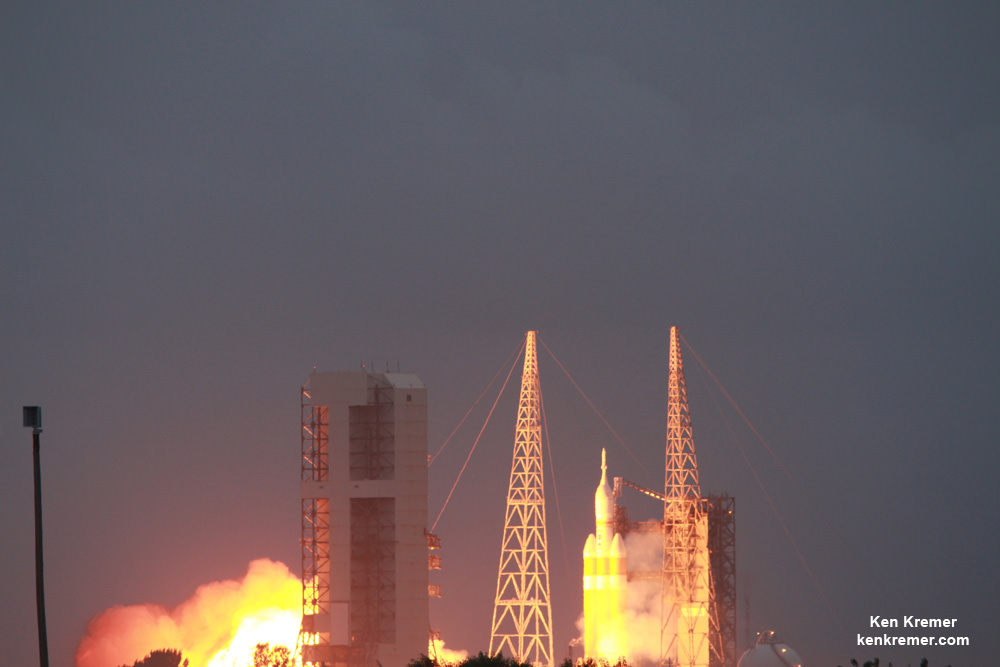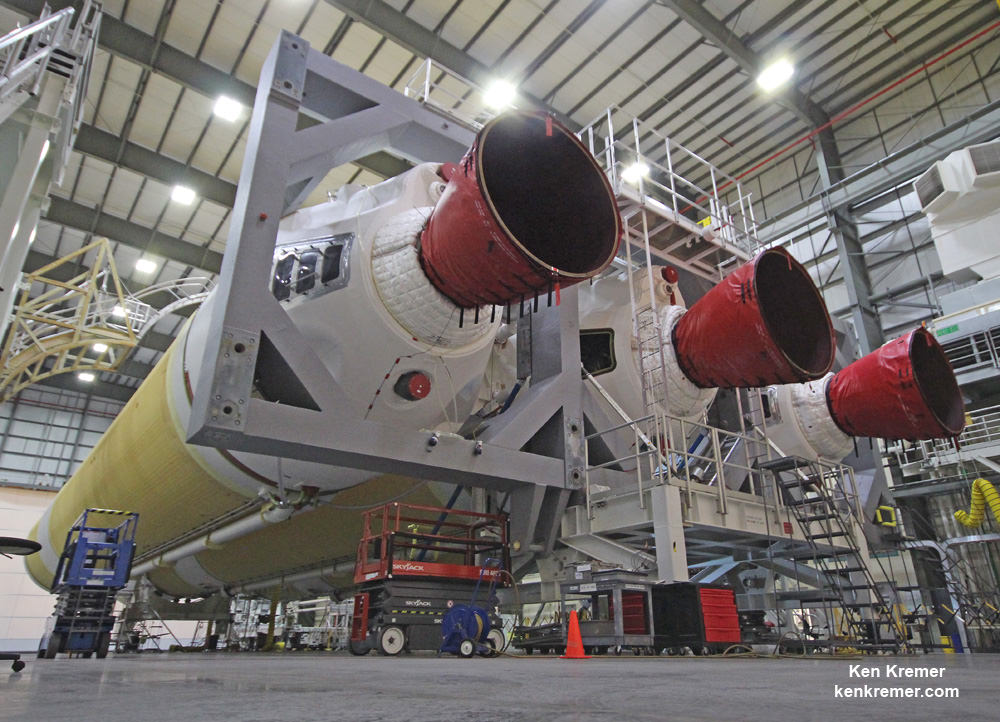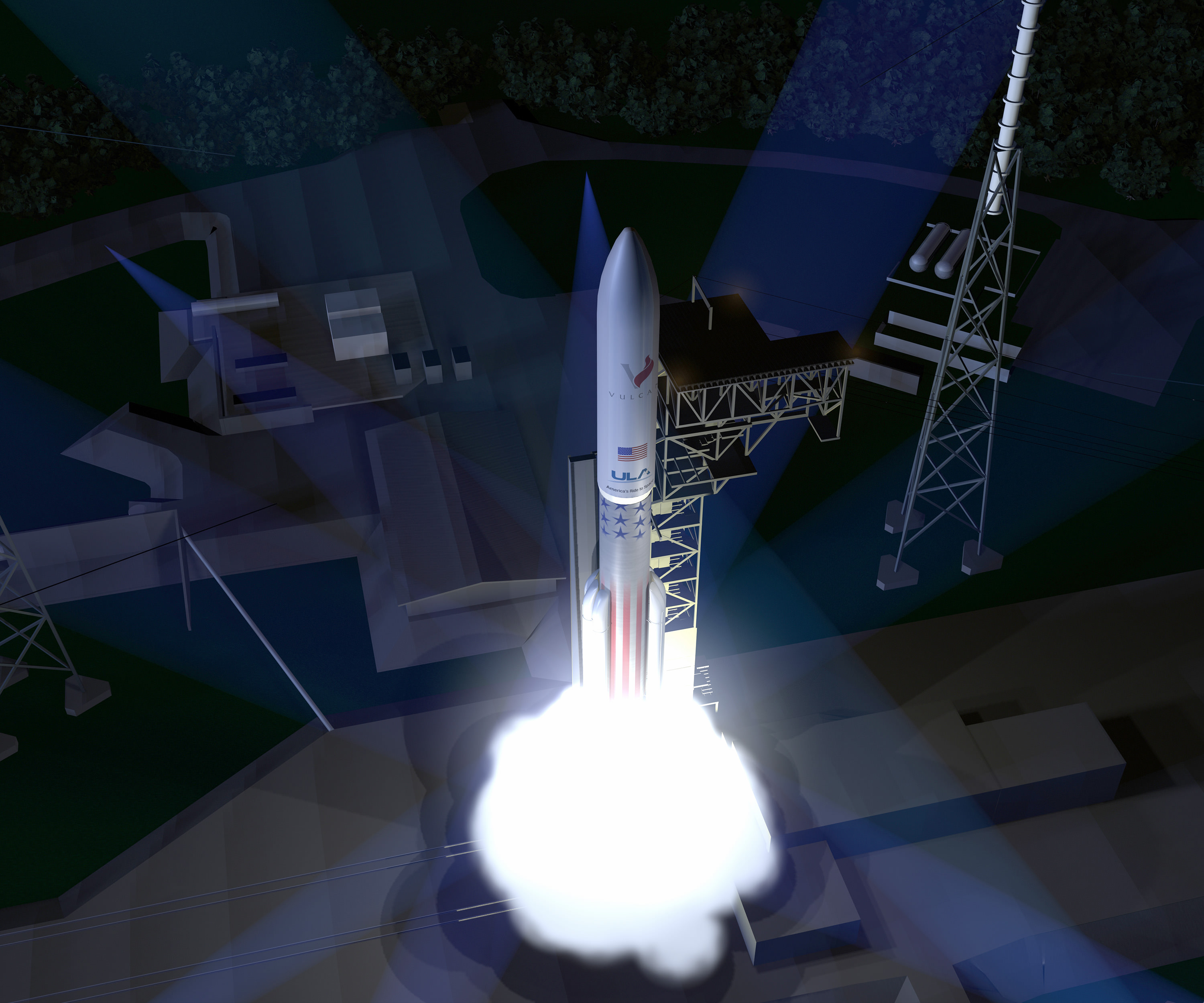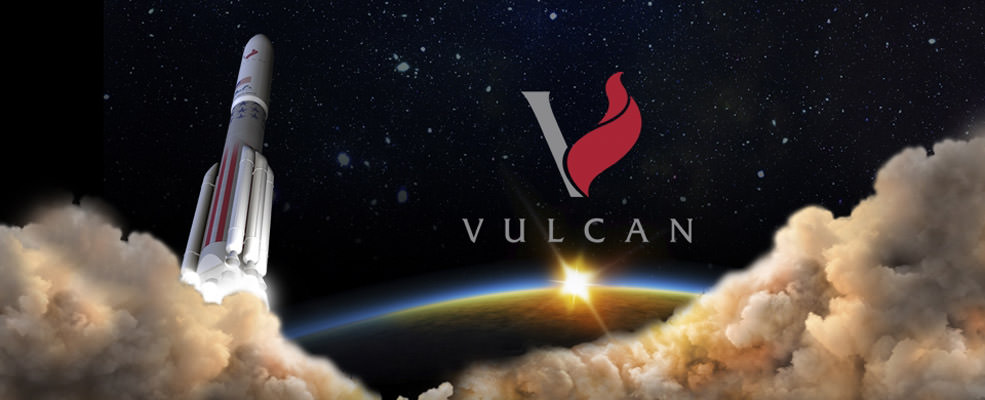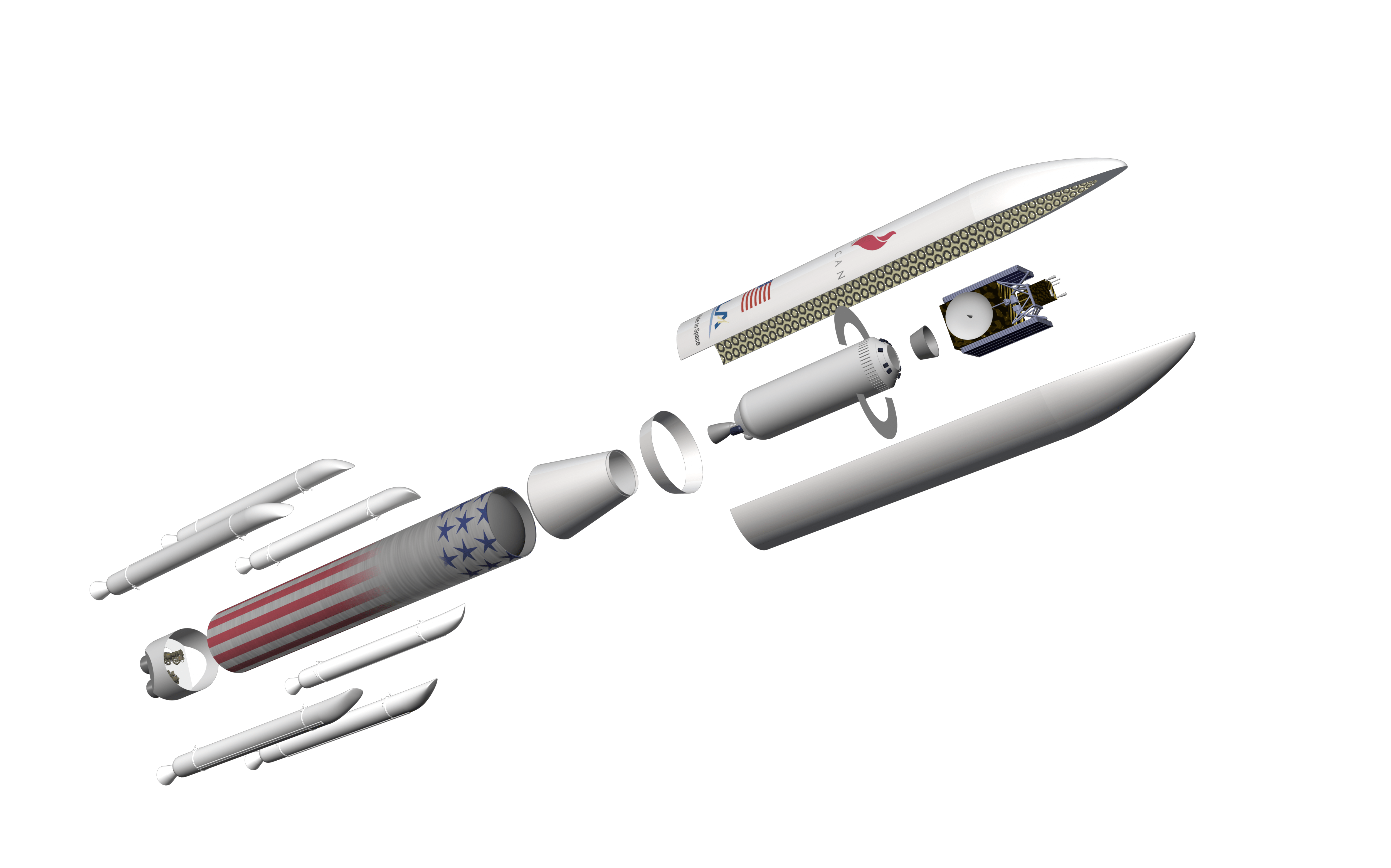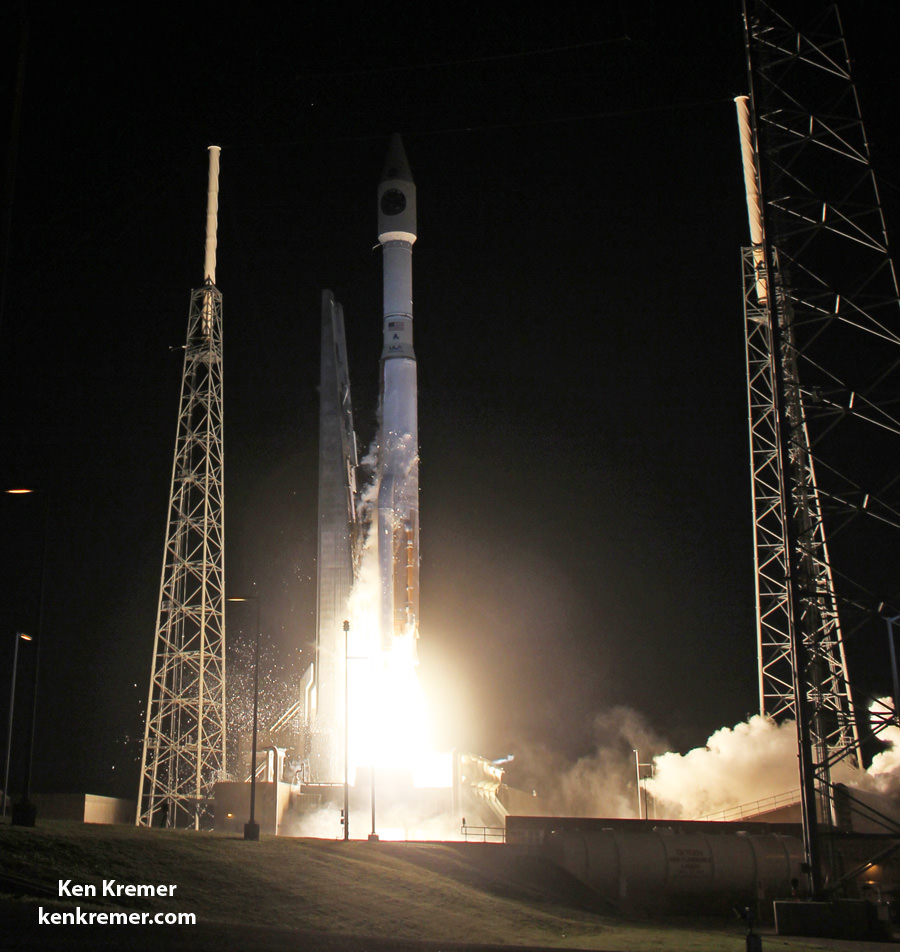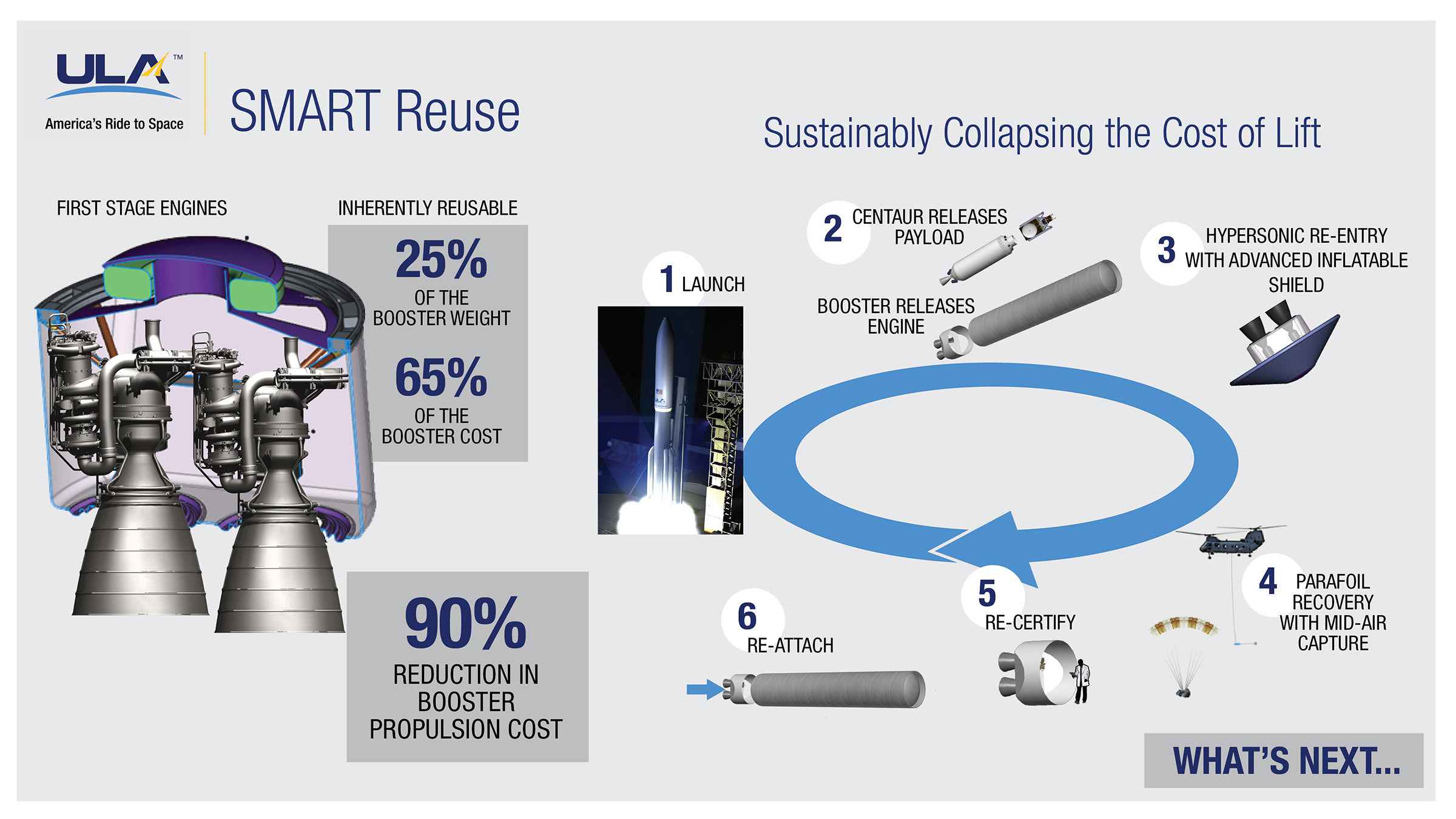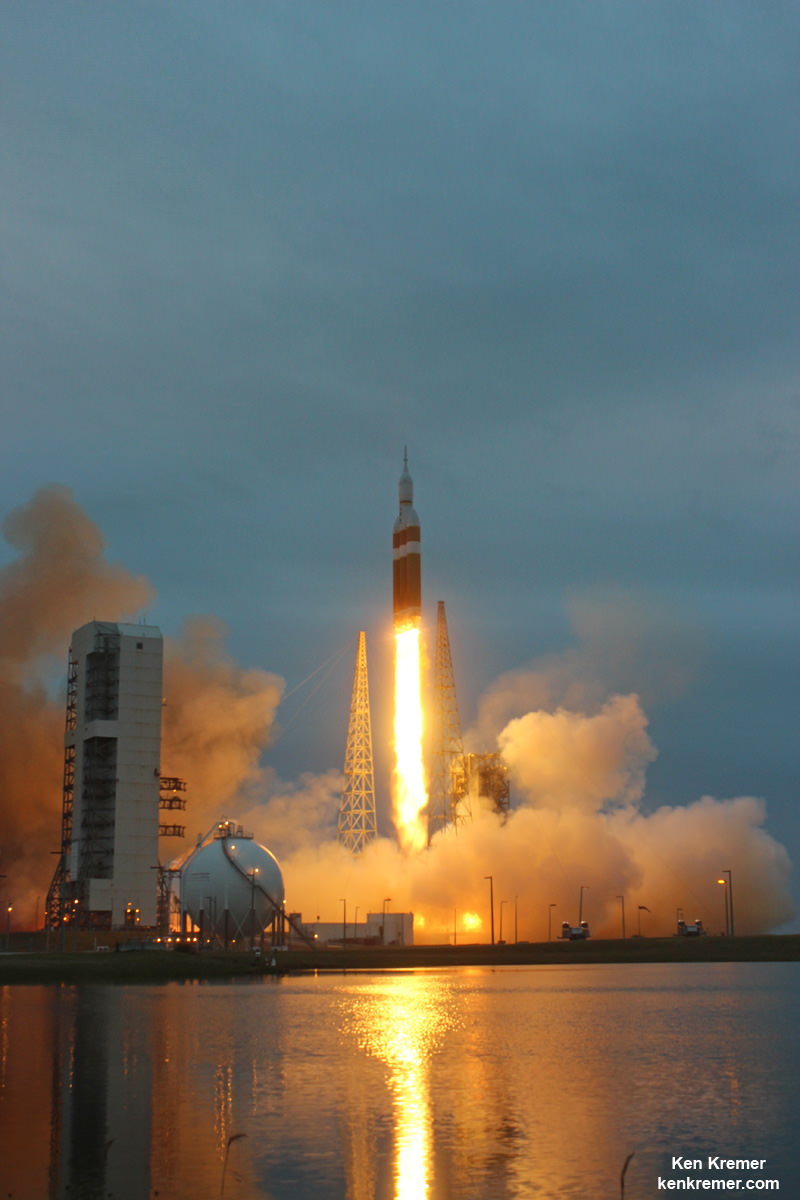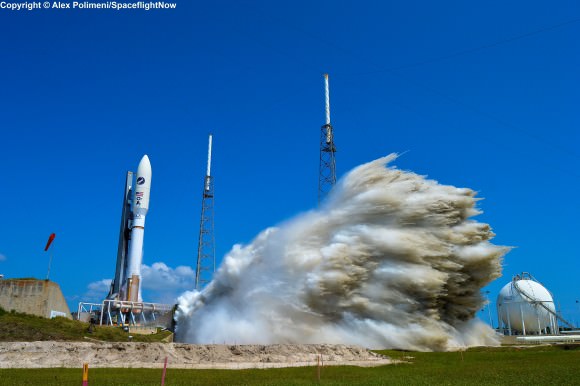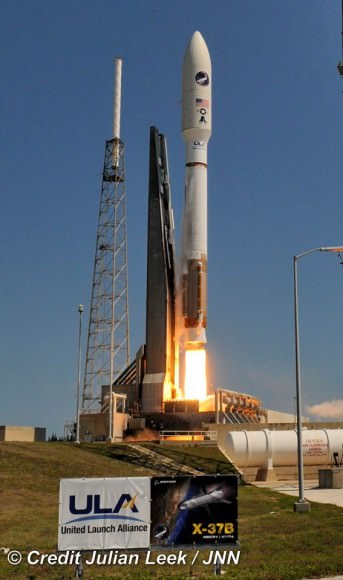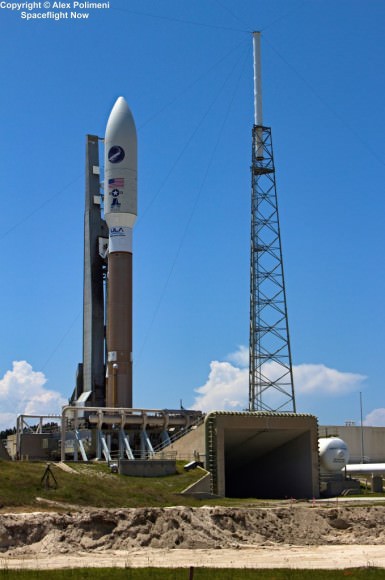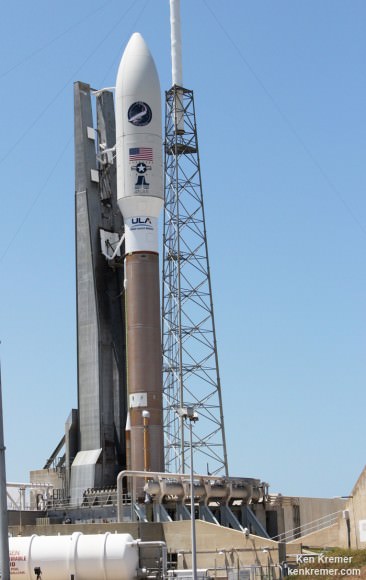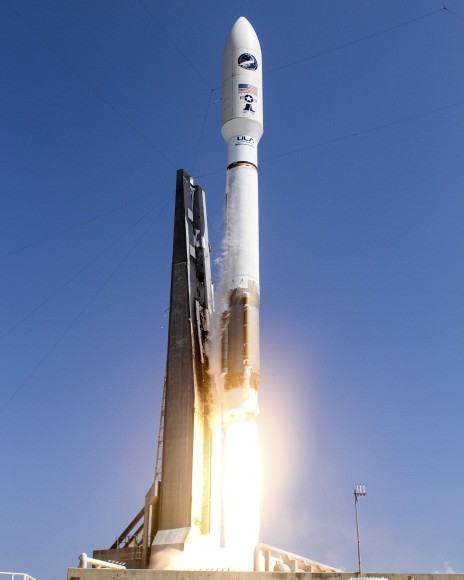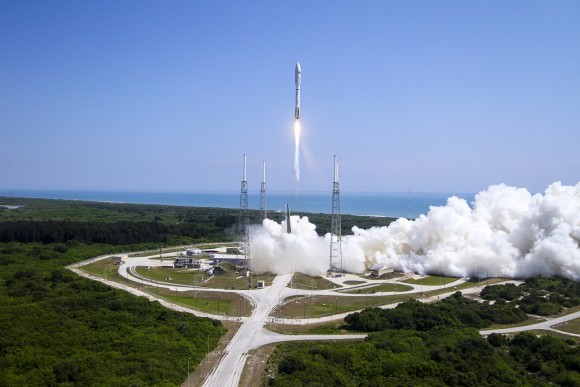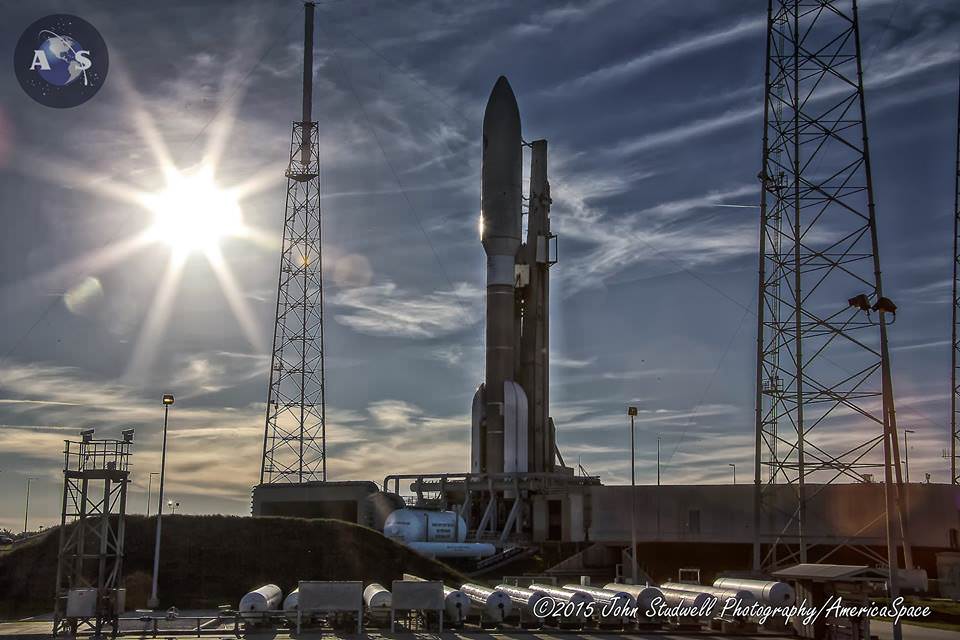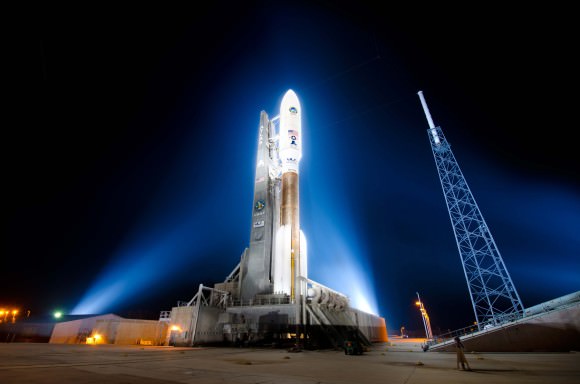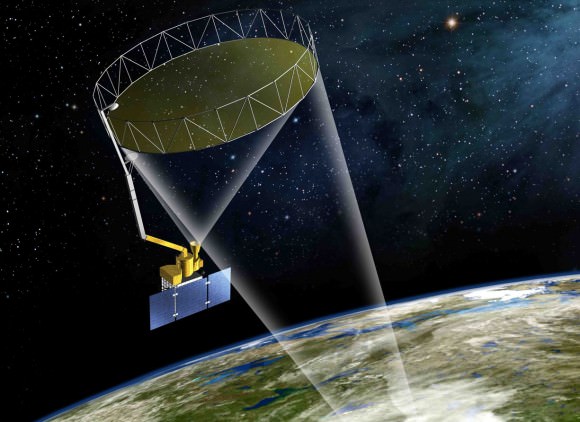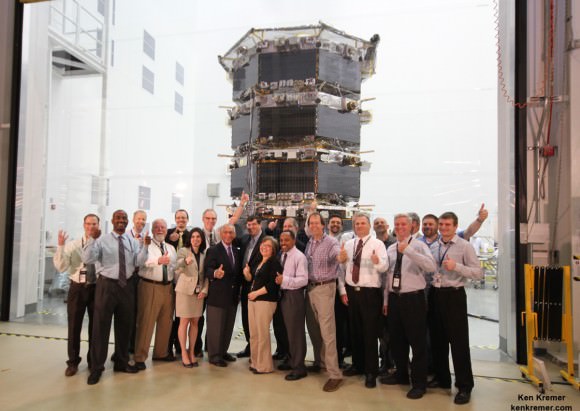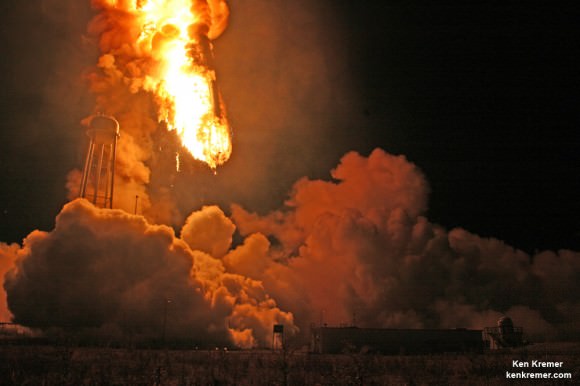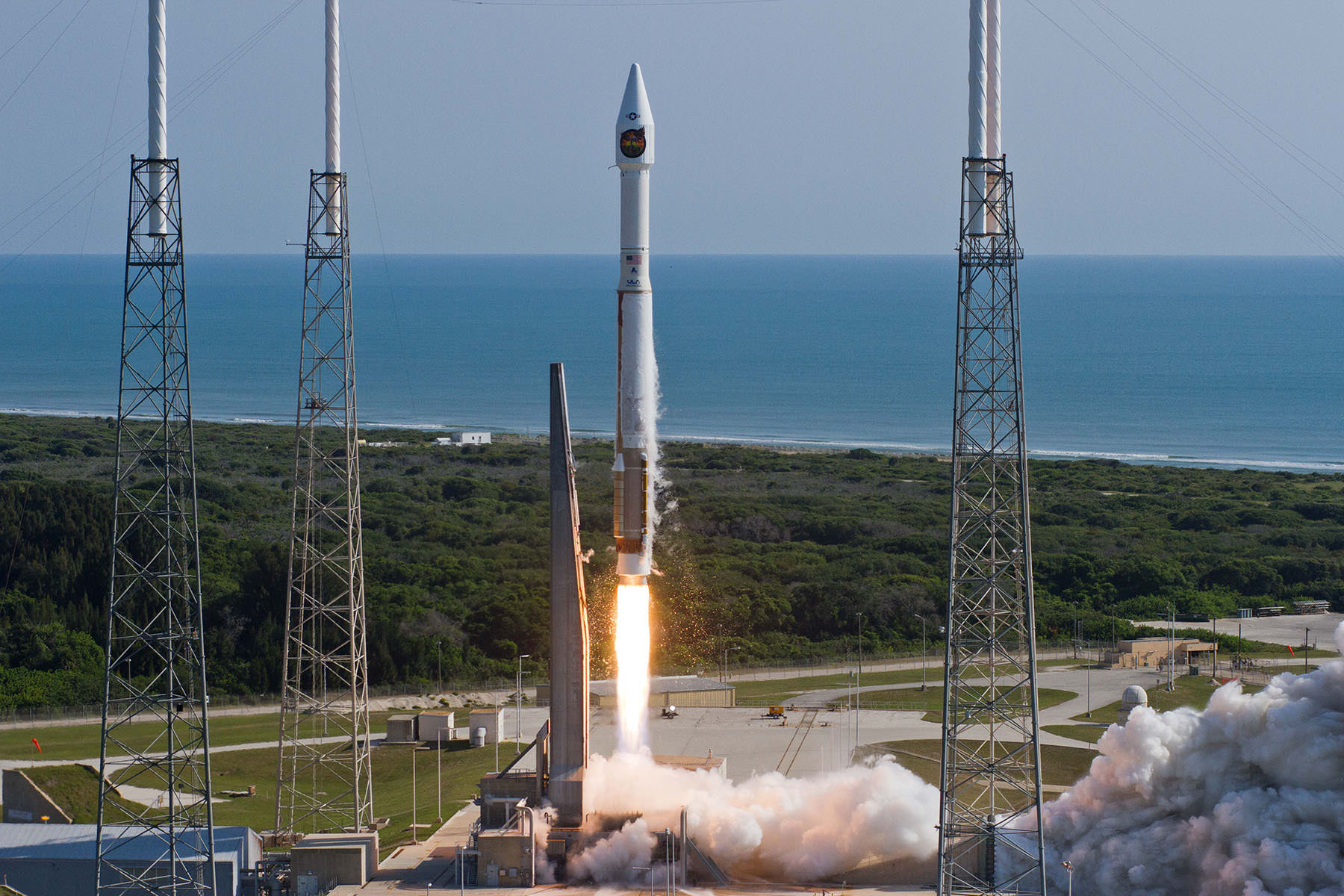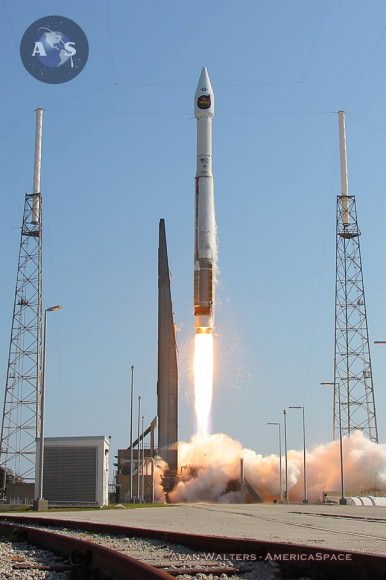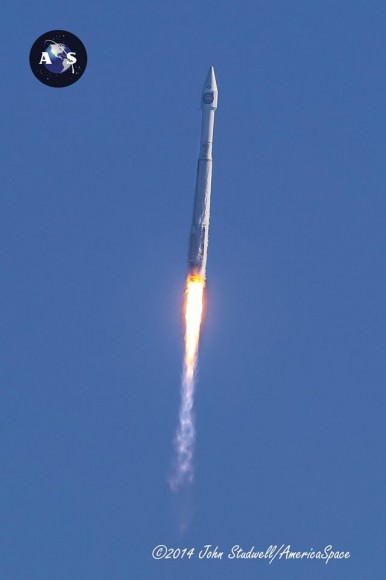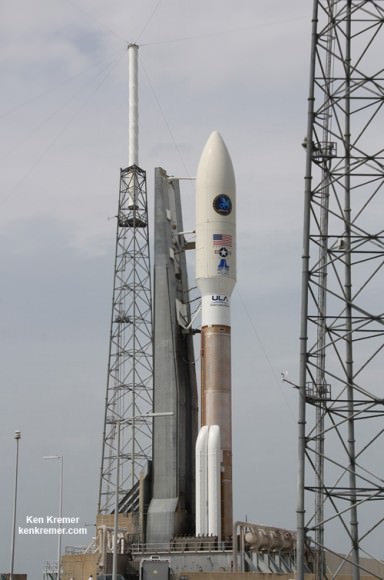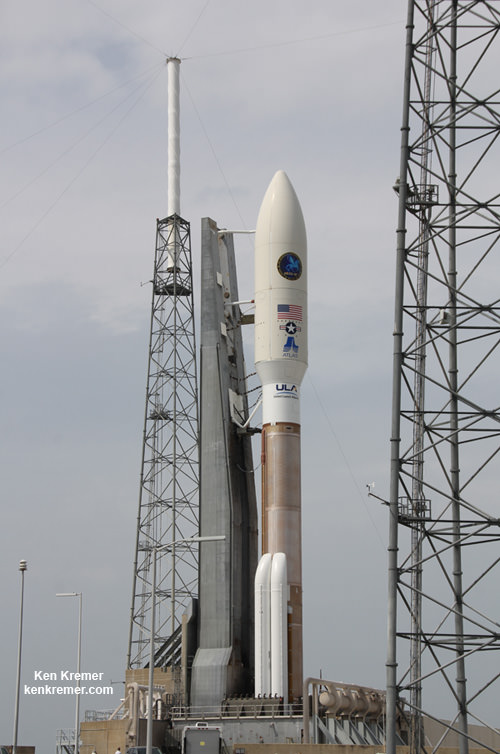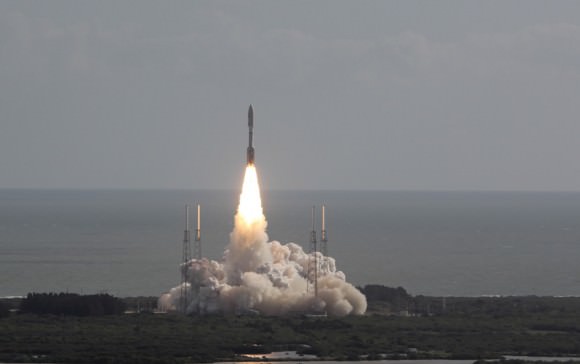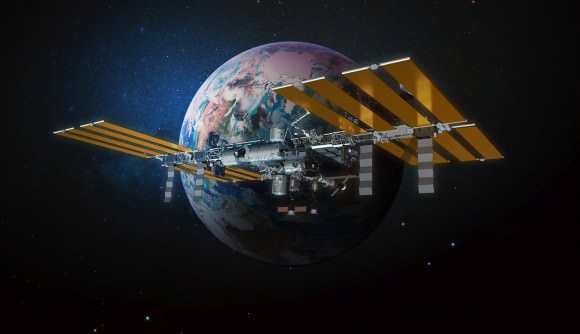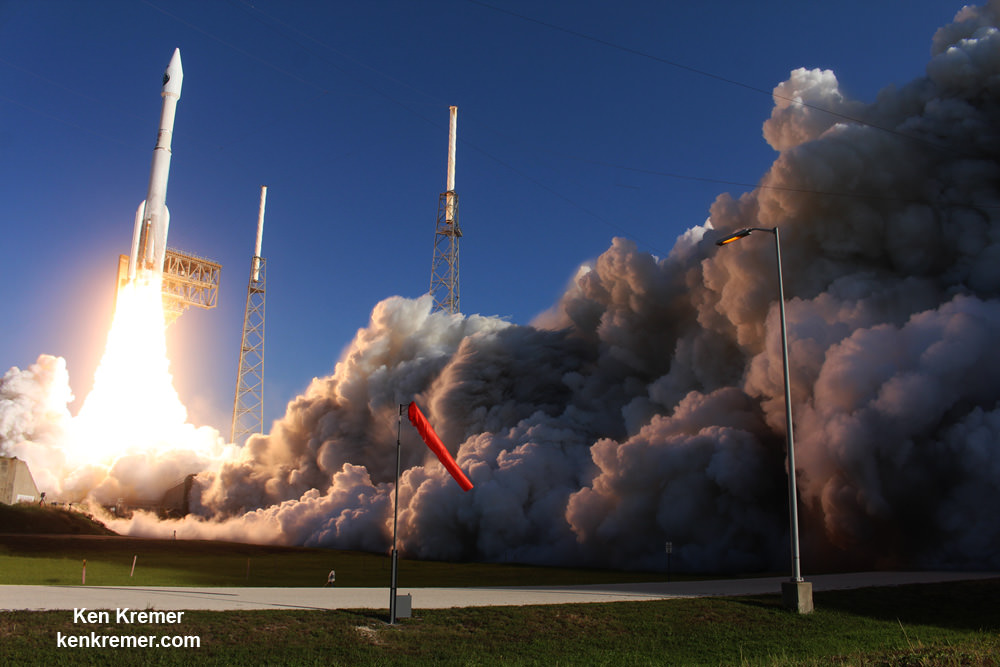
CAPE CANAVERAL AIR FORCE STATION, FL — Riding atop the crackling roar of an Atlas V rocket, a clandestine surveillance satellite for our nation’s spy masters was carried aloft by a powerful booster from the Florida space coast to an undisclosed orbit at breakfast time today, Thursday, July 28.
The United Launch Alliance (ULA) Atlas V rocket carrying the NROL-61 surveillance satellite for the National Reconnaissance Office (NRO) lifted off from Space Launch Complex-41 right at the appointed time of 8:37 a.m. EDT this morning with approximately 1.5 million pounds of thrust.
The top secret NROL-61 satellite bolted on top and inside the 4 meter diameter nose cone was launched in support of US national defense and is vital to US national security.
“Thank you to the entire mission team for years of hard work and collaboration on today’s successful launch of NROL-61. We are proud the U.S. Air Force and NRO Office of Space Launch have entrusted ULA with delivering this critical asset for our nation’s security,” said Laura Maginnis, ULA vice president of Custom Services, in a statement.
“Our continued one launch at a time focus and exceptional teamwork make launches like today’s successful.”
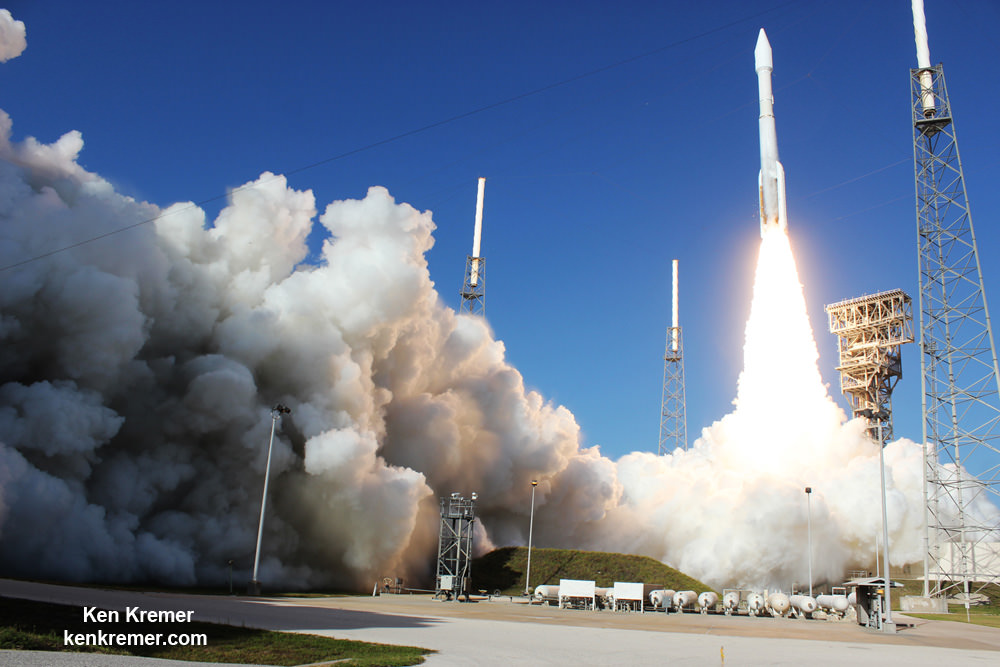
The launch was webcast live by ULA and featured video recorded call in questions about spaceflight from the general public – especially children!
The rocket roared off pad 41 atop an ever expanding plume of smoke and ash into a brilliant and cloudless blue sky under absolutely ideal weather conditions with clear lines of sight enjoyed by hordes of spectators gathered here from near and far, and lining the space coast beaches and surrounding viewing areas.
Many local area hotels were packed with space enthusiasts hoping for a space spectacular at this unusually convenient launch time – and they were not disappointed!!
Because the Atlas rocket was equipped with a pair of powerful solid rocket boosters to augment its liftoff thrust, the smoke plume was visible for as long as we could see it.
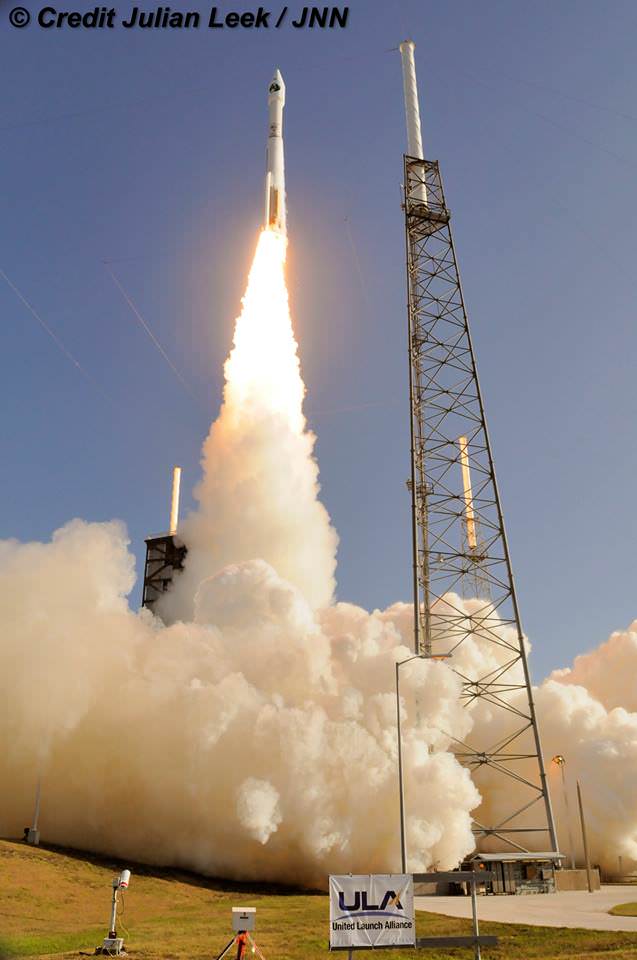
The rocket soon arced over, racing southeasterly to orbit and towards the African continent.
Virtually everything about the clandestine payload, its mission, purpose and goals are classified top secret on a mission of vital importance to America’s national security and defense needs.
The NRO is the government agency that runs a vast fleet of powerful orbital assets hosting a multitude of the most advanced, wide ranging and top secret capabilities.
The most recent NRO payload, known as NROL 37, was just launched by ULA last month on their Delta IV Heavy – the most powerful rocket in the world on June 11 – read my story here.
The venerable ULA Atlas V rocket sports a 100% record of launch success and its unusual for technical issues to hold up a launch. The ever changeable Florida weather is another matter entirely.
The NROL-61 mission counts as ULA’s sixth launch of 2016 and the 109th overall since the company was founded in 2006.
The 20 story tall Atlas V launched in its 421 configuration – the same as what will be used for manned launches with the crewed Boeing ‘Starliner’ space taxi carrying astronaut crews to the International Space Station.
This was the sixth Atlas V to launch in the 421 configuration.
The Atlas 421 vehicle includes a 4-meter diameter Extra Extended Payload Fairing (XEPF) payload fairing and two solid rocket boosters that augment the first stage. The Atlas booster for this mission was powered by the RD AMROSS RD-180 engine and the Centaur upper stage was powered by the Aerojet Rocketdyne RL10C-1 engine.
The RD-180 burns RP-1 (Rocket Propellant-1 or highly purified kerosene) and liquid oxygen and delivers 860,200 lb of thrust at sea level.
The strap on solids deliver approximately 500,000 pounds of thrust.
The solids were jettisoned about 2 minutes after liftoff.
Virtually everything about the clandestine payload, its mission, purpose and goals are classified top secret.
The NRO is the government agency that runs a vast fleet of powerful orbital assets hosting a multitude of the most advanced, wide ranging and top secret capabilities.
The possible roles for the reconnaissance payload include signals intelligence, eavesdropping, imaging and spectroscopic observations, early missile warnings and much more.
The NRO was formed in response to the Soviet launch of Sputnik and secretly created on September 6, 1961.
“The purpose is overseeing all satellite and overflight reconnaissance projects whether overt or covert. The existence of the organization is no longer classified today, but we’re still pressing to perform the functions necessary to keep American citizens safe,” according to the official NRO website.
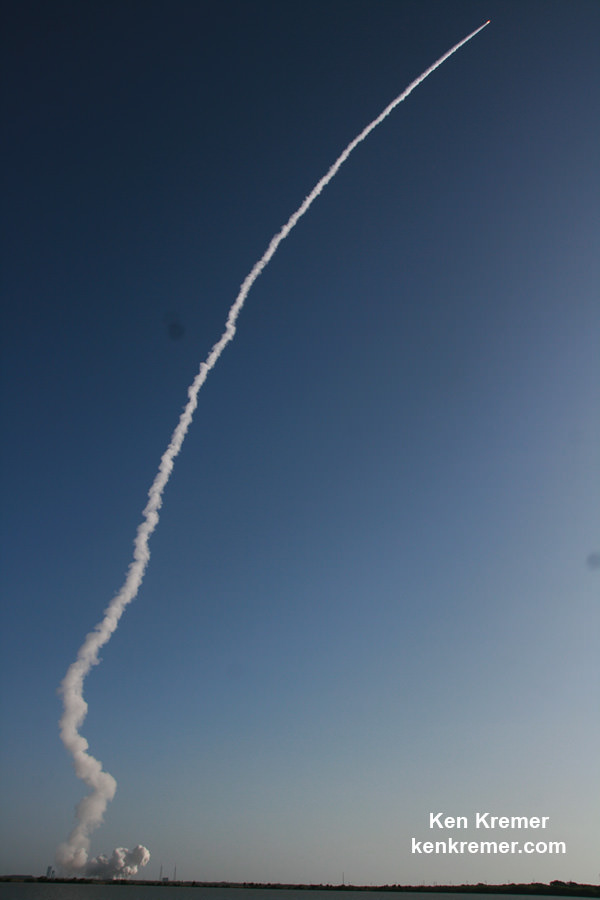
Watch for Ken’s continuing on site reports direct from Cape Canaveral Air Force Station, the Kennedy Space Center and the ULA Atlas launch pad.
Stay tuned here for Ken’s continuing Earth and Planetary science and human spaceflight news.
………….
Learn more about SLS and Orion crew vehicle, SpaceX CRS-9 rocket launch, ISS, ULA Atlas and Delta rockets, Juno at Jupiter, Orbital ATK Antares & Cygnus, Boeing, Space Taxis, Mars rovers, NASA missions and more at Ken’s upcoming outreach events:
July 27-28: “ULA Atlas V NRO Spysat launch July 28, SpaceX launch to ISS on CRS-9, SLS, Orion, Juno at Jupiter, ULA Delta 4 Heavy NRO spy satellite, Commercial crew, Curiosity explores Mars, Pluto and more,” Kennedy Space Center Quality Inn, Titusville, FL, evenings
